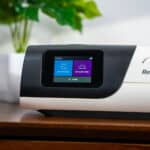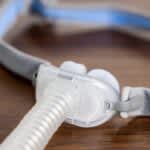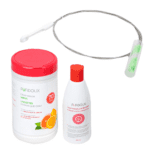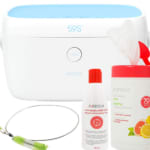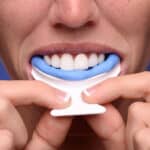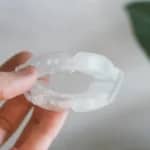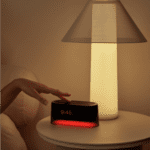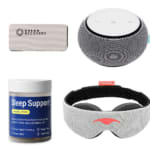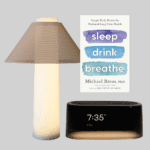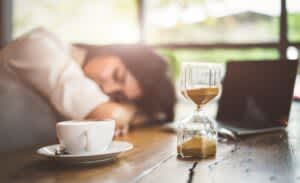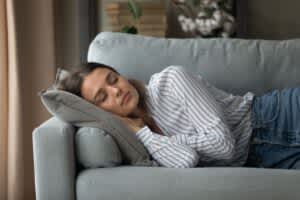People nap for a variety of reasons. Perhaps taking an afternoon siesta is part of your culture, or maybe you have noticed a midday nap helps you feel less stressed. However, busy work schedules do not always allow for long daytime breaks to retreat to bed. This is why many people are intrigued by the idea of the power nap.
We explore this short nap, specifically designed for workers, and delve into how long a power nap should be, the benefits it provides, how it compares to drinking coffee for alertness, and tips for a better power nap.
Top 5 Power Nap Tips

- 1 Limit your power nap between 10 to 20 minutes.
- 2 Do not power nap in the evening, close to bedtime.
- 3 Block out sleep disruptors, like noise and light.
- 4 Nap in a comfortable place that you can fall asleep quickly in.
- 5 Avoid looking at a phone or TV before napping.
Many of us take naps and the right type of nap can leave you feeling more energized and alert.
Power Nap Definition
A sleep expert in the 1990s coined the term power nap to promote the practice of taking brief naps at work. In addition to being less disruptive to a person’s workday, a power nap may also be more successful than longer naps when it comes to improving work performance post-nap.
Although midday napping is culturally acceptable in many countries, such as Spain, Italy, China, and Japan, it is still associated with laziness in the United States. Researchers are working to reverse the power nap stigma, since taking a nap during the workday can increase alertness and potentially counteract the detrimental effects of sleep deprivation on work performance.
How Long Should a Power Nap Be?
Research suggests 10 to 20 minutes is the ideal length for a power nap, although short naps lasting up to 30 minutes may provide benefits depending on what time of day you take the nap and how tired you were beforehand.
The longer you nap, the more likely you are to enter slow wave sleep. Waking from slow wave sleep can cause a groggy feeling known as sleep inertia. As a result, the benefits of a 10-minute nap are more likely to be felt immediately upon waking, while the benefits of a 20 or 30-minute nap might be delayed until sleep inertia wears off.
When Should You Take a Power Nap?
The best time of day for napping varies depending on a person’s sleep and work schedule. People with a typical daytime work schedule may find it helpful to nap during the post-lunch dip, the period of time in which our bodies naturally become more tired in the early afternoon.
Studies have shown that naps taken before this period, such as at 12:20 p.m., as well as naps taken later, at 2 p.m., both succeed at reducing sleepiness. Researchers theorize that sleep-deprived people might benefit more from an earlier nap, while people who are not sleep-deprived might do better with a later nap.
During the post-lunch dip, also called the afternoon slump, many people experience a drop in energy levels and cognitive ability. Despite its name, the post-lunch dip is primarily due to natural fluctuations in the body’s sleep-wake rhythm. The timing of a post-lunch dip varies from person to person depending on their circadian rhythm, or internal body clock. Paying attention to when you begin to feel tired during your day could help you determine the best time for your power nap.
Experts recommend avoiding naps late in the day, as they could make it difficult to sleep at night.
Benefits of a Power Nap
Although results are somewhat mixed, research studies have found multiple benefits associated with short naps:
- Increased alertness
- Improved cognitive function
- Improved memory
- Improved logical reasoning
- Faster reaction time
- Reduced sleepiness
- Better learning after the nap
- Increased emotional regulation
- Improved physical performance
Research suggests the benefits of a short nap may be greater for people who make napping a habit, due to adjustments in their sleep-wake schedules.
See the Best Mattresses of 2025Is a Power Nap Better Than Coffee?
There are subtle differences in the way caffeine and naps fight sleepiness. Caffeine directly promotes alertness, whereas napping reduces the desire to sleep. The most effective choice may depend on individual factors such as your age, how sleep-deprived you are, and whether you enter deep sleep during your nap.
Researchers have also compared a regular nap with a caffeine nap. A caffeine nap involves ingesting caffeine immediately prior to taking a power nap. The caffeine’s energizing effects kick in around the time a person wakes up from their nap. Together, caffeine and a nap have been shown to reduce sleep inertia compared to napping alone, and could be a useful strategy for workers.
Tips for a Better Power Nap
Applying sleep hygiene techniques to your power nap might help you fall asleep faster. When taking a power nap:
- Avoid sleep disruptors, like noise and light
- Nap in a comfortable place that is not too hot or cold
- Avoid looking at your phone, TV, or other devices immediately before your nap
A power nap is not a substitute for proper sleep. If you have trouble reaching a minimum of seven hours of sleep per night, you may need to take longer naps, make further lifestyle adjustments, or talk to your doctor for help sleeping better.
References
The Sleep Doctor Forum: Real Experiences, Real Connections
Continue the discussion on the Sleep Doctor Forum. Connect with experts and fellow forum members on CPAP, sleep apnea, and all things sleep. A priceless resource that’s free to join.

